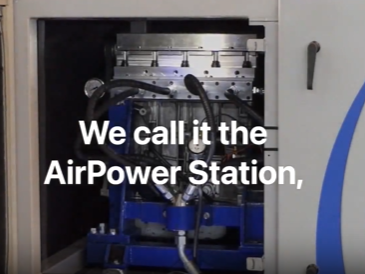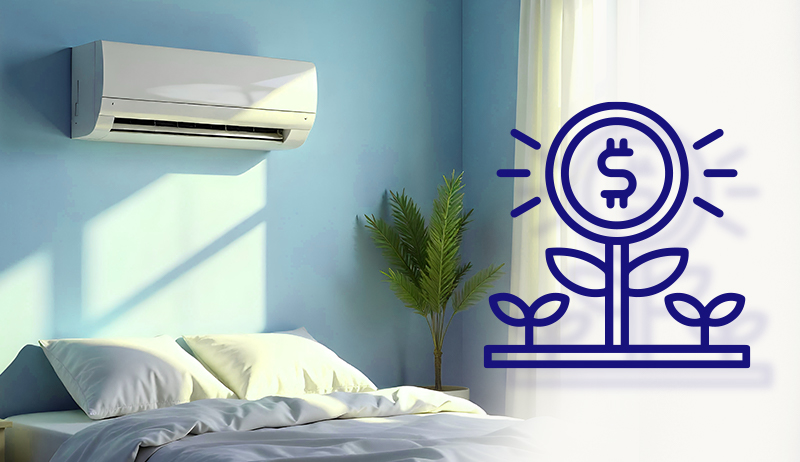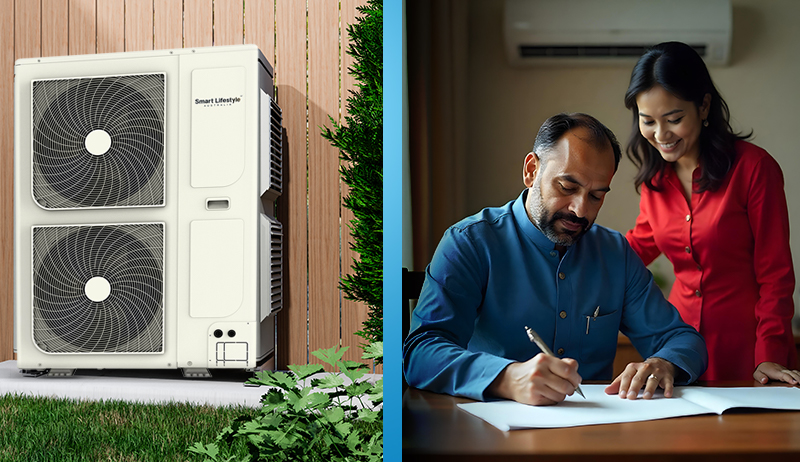▶️ The Race for Renewable Energy Supremacy: A Multifaceted Landscape
Pinpointing a single “top” country in renewable energy development is challenging, as different metrics paint varied pictures.
China stands out in total installed capacity, boasting a massive 1,161 gigawatts, nearly half the global figure. This reflects their aggressive investments in solar and wind power.
However, focusing solely on capacity doesn’t tell the whole story. When considering the renewable energy share of total electricity generation, Denmark, Uruguay, and Austria steal the spotlight. Each generates over 38% of their electricity from renewables, primarily wind and hydropower. These nations have set ambitious goals like 100% renewable energy by 2035 (Denmark) and carbon neutrality by 2050 (Uruguay).
Ultimately, the “top” country depends on the chosen criteria. China dominates in raw capacity, while several European nations excel in integrating renewables into their grids. Regardless of individual rankings, the global momentum towards renewable energy is undeniable, with numerous countries making significant strides. This diverse landscape, with each nation bringing its unique strengths and targets, paints a promising picture for a cleaner and more sustainable energy future.
▶️ Top Contenders in the Renewable Energy Race: A Global Spotlight
The race towards a sustainable future fueled by renewable energy is gaining momentum, with several countries emerging as frontrunners. Each nation takes a unique approach, excelling in different areas depending on their resources and priorities. Let’s delve into the top contenders and their impressive strides:
Total Installed Capacity Champions:
1. China
- China: The undisputed king of renewable energy capacity, China boasts a staggering 1,161 gigawatts (GW) of installed capacity. This translates to nearly half the world’s total, with solar and wind power leading the charge. Driven by ambitious government targets and massive investments, China’s renewable energy expansion is truly phenomenal.
- United States: Following closely with 352 GW, the US leverages its diverse geographical resources to shine in wind, solar, and hydropower. A mix of public and private initiatives fuels this growth, making the US a key player in the global energy transition.
- Brazil: South America’s renewable giant, Brazil, harnesses its abundant hydropower resources to boast 217 GW of installed capacity. Wind and solar are also seeing significant investments, driving Brazil’s quest for energy independence and a greener future.
Renewable Energy Share Leaders:
- Denmark: This Nordic nation sets the bar high, generating a remarkable 39% of its electricity from renewables, primarily wind power. Its ambitious goals of 100% renewable energy by 2035 and complete fossil fuel independence by 2050 are truly inspiring.
- Uruguay: Uruguay stands tall with a 38% renewable share, leaning heavily on hydropower and wind energy. The nation aims for 100% renewable electricity by 2030 and carbon neutrality by 2050, demonstrating their commitment to a sustainable future.
- Austria: Rounding out the top three with 38%, Austria excels in hydropower and biomass, contributing significantly to its renewable energy share. The country’s ambitious targets include 100% renewable electricity by 2030 and climate neutrality by 2040, showcasing their dedication to a clean energy future.
Other Notable Players:
- Germany: A solar energy leader, Germany’s Energiewende policy has championed the transition towards renewables, paving the way for other nations.
- Sweden: Aiming for 100% renewable electricity by 2040 and carbon neutrality by 2045, Sweden leverages hydropower, wind, and solar to push towards sustainability.
- Iceland: Nearly 100% reliant on geothermal and hydropower, Iceland stands as a testament to the potential of clean energy sources.
▶️ Top Contenders in Renewable Energy Development: A Comparative Table
| Country | Total Installed Capacity (GW) | Renewable Share of Electricity (%) | Key Strengths | Notable Goals |
|---|---|---|---|---|
| China | 1,161 | N/A | Solar, Wind | Ambitious government targets, massive investments |
| United States | 352 | N/A | Wind, Solar, Hydropower | Diverse resources, public-private initiatives |
| Brazil | 217 | N/A | Hydropower, Wind, Solar | Energy independence, sustainability goals |
| Denmark | N/A | 39 | Wind | 100% renewable energy by 2035, fossil fuel independence by 2050 |
| Uruguay | N/A | 38 | Hydropower, Wind | 100% renewable electricity by 2030, carbon neutrality by 2050 |
| Austria | N/A | 38 | Hydropower, Biomass | 100% renewable electricity by 2030, climate neutrality by 2040 |
Additional Notes:
- The table reflects data from 2022 or prior depending on availability.
- While China leads in total installed capacity, individual data for electricity generation share isn’t readily available due to different reporting methods.
- Other notable players like Germany, Sweden, and Iceland were excluded from the table for conciseness but could be added with separate rows.
▶️ Key Indicator for Top Country in Renewable Energy Development
Unfortunately, there is no single “key indicator” to definitively crown a country as the “top” in renewable energy development. Different metrics capture different aspects of progress, each revealing valuable insights, making a unified answer complex. Here’s a breakdown of key indicators and their limitations:
1. Total Installed Renewable Energy Capacity (GW):
- Advantages: Shows a country’s commitment and investment in building renewable infrastructure. Reflects potential for future electricity generation.
- Limitations: Doesn’t consider efficiency, population needs, or integration into the grid. China dominates here, but it doesn’t translate directly to leadership in other aspects.
2. Renewable Energy Share of Total Electricity (%):
- Advantages: Illustrates how much a country relies on renewables for its actual electricity usage. Reflects progress towards sustainability and energy independence.
- Limitations: Doesn’t consider the total amount of electricity generated or potential for further growth. Denmark, Uruguay, and Austria excel here, but their starting points with existing hydropower might differ from others.
3. Investment in Renewable Research and Development (R&D):
- Advantages: Highlights a country’s commitment to innovation and future breakthroughs in renewable technologies. Crucial for long-term progress and cost reductions.
- Limitations: Data might be less readily available and difficult to compare across nations. Investment doesn’t guarantee immediate results or successful implementation.
4. Policy and Regulatory Frameworks:
- Advantages: Showcases a country’s political will and enabling environment for renewable energy development. Supportive policies can attract investment and accelerate progress.
- Limitations: Can be subjective to evaluate and compare due to varying political contexts and priorities. Impact might take time to translate into concrete results.
5. Carbon Neutrality Goals and Achievement:
- Advantages: Captures a country’s ambition and progress towards mitigating climate change, a key driver for renewable energy adoption.
- Limitations: Goals don’t guarantee achievement, and timelines might differ. Countries with high fossil fuel dependence might face greater challenges reaching carbon neutrality.
Therefore, a holistic approach considering multiple indicators is most effective to assess a country’s position in renewable energy development. Analyzing strengths and weaknesses across each metric provides a more nuanced understanding of their leadership and potential for future progress.
Unfortunately, there is no single “key indicator” to definitively crown a country as the “top” in renewable energy development. Different metrics capture different aspects of progress, each revealing valuable insights, making a unified answer complex. Here’s a breakdown of key indicators and their limitations:
1. Total Installed Renewable Energy Capacity (GW):
- Advantages: Shows a country’s commitment and investment in building renewable infrastructure. Reflects potential for future electricity generation.
- Limitations: Doesn’t consider efficiency, population needs, or integration into the grid. China dominates here, but it doesn’t translate directly to leadership in other aspects.
2. Renewable Energy Share of Total Electricity (%):
- Advantages: Illustrates how much a country relies on renewables for its actual electricity usage. Reflects progress towards sustainability and energy independence.
- Limitations: Doesn’t consider the total amount of electricity generated or potential for further growth. Denmark, Uruguay, and Austria excel here, but their starting points with existing hydropower might differ from others.
3. Investment in Renewable Research and Development (R&D):
- Advantages: Highlights a country’s commitment to innovation and future breakthroughs in renewable technologies. Crucial for long-term progress and cost reductions.
- Limitations: Data might be less readily available and difficult to compare across nations. Investment doesn’t guarantee immediate results or successful implementation.
4. Policy and Regulatory Frameworks:
- Advantages: Showcases a country’s political will and enabling environment for renewable energy development. Supportive policies can attract investment and accelerate progress.
- Limitations: Can be subjective to evaluate and compare due to varying political contexts and priorities. Impact might take time to translate into concrete results.
5. Carbon Neutrality Goals and Achievement:
- Advantages: Captures a country’s ambition and progress towards mitigating climate change, a key driver for renewable energy adoption.
- Limitations: Goals don’t guarantee achievement, and timelines might differ. Countries with high fossil fuel dependence might face greater challenges reaching carbon neutrality.
Therefore, a holistic approach considering multiple indicators is most effective to assess a country’s position in renewable energy development. Analyzing strengths and weaknesses across each metric provides a more nuanced understanding of their leadership and potential for future progress.
Largest Solar Farm:
- Bhadla Solar Park, India: 10,200 MW (operational since 2019)
- Longyangxia Dam Solar Park, China: 8.5 GW (operational since 2021)
- Mohammed bin Rashid Al Maktoum Solar Park, UAE: 5.6 GW (operational phases, further expansion planned)
Largest Wind Farm:
- Hornsea 2 Wind Farm, United Kingdom: 1.4 GW (operational since 2022)
- Dogger Bank Wind Farm, United Kingdom: 3.6 GW (under construction, operational phases planned)
- Baihetan Hydropower Base, China: 16 GW (hydroelectric, operational since 2021)
Largest Hydroelectric Dam:
- Three Gorges Dam, China: 22.5 GW (operational since 2008)
- Itaipu Dam, Brazil/Paraguay: 14 GW (operational since 1984)
- Grand Coulee Dam, USA: 6.8 GW (operational since 1942)
Remember, these are just some examples, and new projects are constantly being developed and pushing the boundaries.
Largest Renewable Energy Facilities by Type
Category
Facility Name
Country
Capacity (MW/GW)
Operational Year
Solar Farm
Bhadla Solar Park
India
10,200 MW
2019
Solar Farm
Longyangxia Dam Solar Park
China
8.5 GW
2021
Solar Farm
Mohammed bin Rashid Al Maktoum Solar Park
UAE
5.6 GW (planned to expand)
(Various phases operational)
Wind Farm
Hornsea 2 Wind Farm
United Kingdom
1.4 GW
2022
Wind Farm
Dogger Bank Wind Farm
United Kingdom
3.6 GW (under construction)
(Operational phases planned)
Hydroelectric Dam
Baihetan Hydropower Base
China
16 GW
2021
Hydroelectric Dam
Three Gorges Dam
China
22.5 GW
2008
Hydroelectric Dam
Itaipu Dam
Brazil/Paraguay
14 GW
1984
Hydroelectric Dam
Grand Coulee Dam
USA
6.8 GW
1942
Notes:
- Capacity is shown in megawatts (MW) for smaller facilities and gigawatts (GW) for larger ones.
- Operational year indicates when the facility started generating electricity.
- Some solar parks like Mohammed bin Rashid Al Maktoum are expanding in phases, so the total capacity listed is the planned final size.
- Dogger Bank Wind Farm is currently under construction, with operational phases planned for the future.
| Category | Facility Name | Country | Capacity (MW/GW) | Operational Year |
|---|---|---|---|---|
| Solar Farm | Bhadla Solar Park | India | 10,200 MW | 2019 |
| Solar Farm | Longyangxia Dam Solar Park | China | 8.5 GW | 2021 |
| Solar Farm | Mohammed bin Rashid Al Maktoum Solar Park | UAE | 5.6 GW (planned to expand) | (Various phases operational) |
| Wind Farm | Hornsea 2 Wind Farm | United Kingdom | 1.4 GW | 2022 |
| Wind Farm | Dogger Bank Wind Farm | United Kingdom | 3.6 GW (under construction) | (Operational phases planned) |
| Hydroelectric Dam | Baihetan Hydropower Base | China | 16 GW | 2021 |
| Hydroelectric Dam | Three Gorges Dam | China | 22.5 GW | 2008 |
| Hydroelectric Dam | Itaipu Dam | Brazil/Paraguay | 14 GW | 1984 |
| Hydroelectric Dam | Grand Coulee Dam | USA | 6.8 GW | 1942 |
Notes:
- Capacity is shown in megawatts (MW) for smaller facilities and gigawatts (GW) for larger ones.
- Operational year indicates when the facility started generating electricity.
- Some solar parks like Mohammed bin Rashid Al Maktoum are expanding in phases, so the total capacity listed is the planned final size.
- Dogger Bank Wind Farm is currently under construction, with operational phases planned for the future.
The Takeaway:
While China reigns supreme in total installed capacity, Denmark, Uruguay, and Austria dominate in terms of renewable energy share. Each nation showcases unique strengths and ambitious targets, contributing significantly to the global shift towards a sustainable energy future. This global race towards clean energy is inspiring, with numerous countries making impressive strides. The future of energy is undoubtedly greener, and these leading contenders are paving the way for a cleaner, more sustainable world.
https://www.exaputra.com/2024/02/top-country-in-renewable-energy.html
Renewable Energy
Before Trump, “Contempt of Court” Used to Be a Big Deal
 Most Americans, me included, are puzzled as to how the Trump administration can openly thumb its nose to the findings of our courts. Until recently, behavior like this would have wound you up in jail.
Most Americans, me included, are puzzled as to how the Trump administration can openly thumb its nose to the findings of our courts. Until recently, behavior like this would have wound you up in jail.
Renewable Energy
How Households Saved $1,200 with VEU & Air-Con Upgrade?
Renewable Energy
Air Power
 About 20 years ago, a friend asked me if I was aware that cars could run on air. I asked, delicately, what she meant, and she explained that cars can run on compressed air.
About 20 years ago, a friend asked me if I was aware that cars could run on air. I asked, delicately, what she meant, and she explained that cars can run on compressed air.
“Ah,” I replied. “Of course they can. But where does the energy come from that compresses the air?” End of conversation.
Now, it’s back. Now there are enormous swaths of the population who know so little about middle school science that they believe we can put cars on the road, in an ocean of air, and extract energy out of that air to power our automobiles.
If you’re among these morons and want to invest with some heavy-duty fraud/charlatans, here’s your opportunity. They say that it’s “self-sustaining and needs no fuel.” If that makes sense to you, be my guest.
-
Climate Change4 months ago
Guest post: Why China is still building new coal – and when it might stop
-
Greenhouse Gases4 months ago
Guest post: Why China is still building new coal – and when it might stop
-
Climate Change2 years ago
Spanish-language misinformation on renewable energy spreads online, report shows
-

 Greenhouse Gases2 years ago
Greenhouse Gases2 years ago嘉宾来稿:满足中国增长的用电需求 光伏加储能“比新建煤电更实惠”
-
Climate Change Videos2 years ago
The toxic gas flares fuelling Nigeria’s climate change – BBC News
-

 Climate Change2 years ago
Climate Change2 years ago嘉宾来稿:满足中国增长的用电需求 光伏加储能“比新建煤电更实惠”
-

 Carbon Footprint2 years ago
Carbon Footprint2 years agoUS SEC’s Climate Disclosure Rules Spur Renewed Interest in Carbon Credits
-
Renewable Energy5 months ago
US Grid Strain, Possible Allete Sale



















